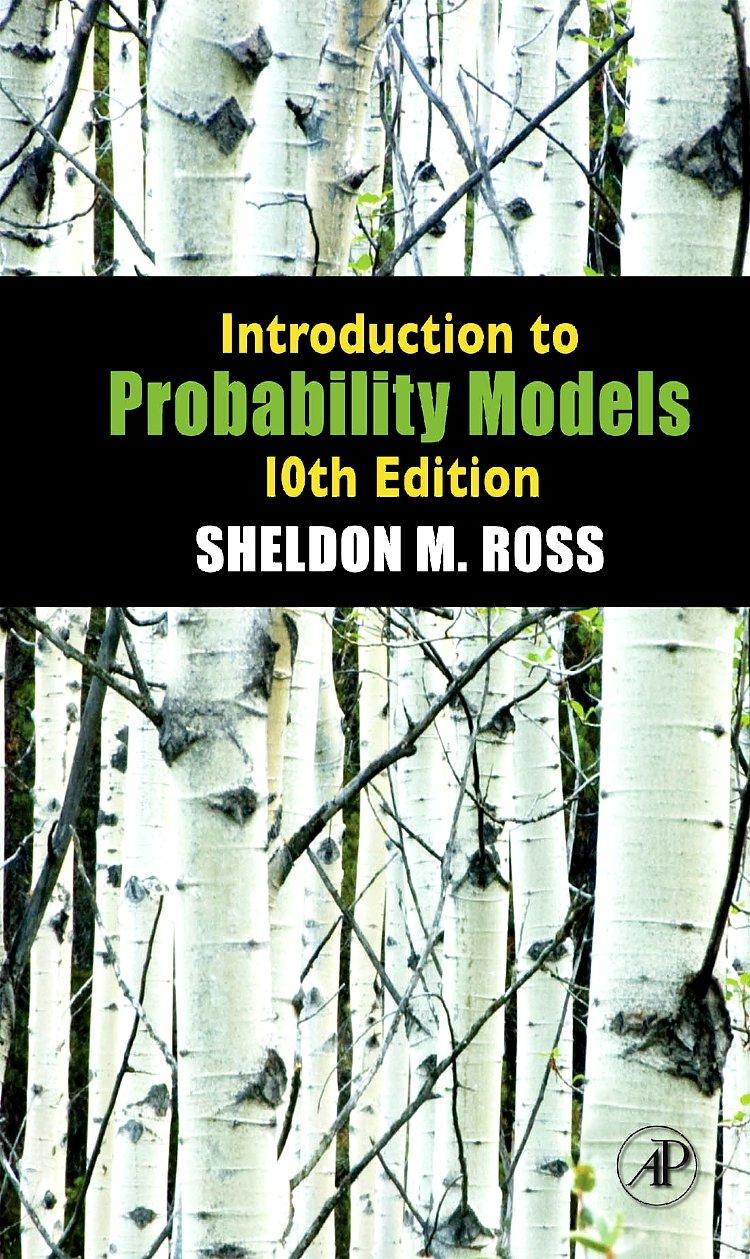12.1
3. Determine the expected count for each outcome. The expected count for outcome 1 is . (Round to two decimal places as needed.) The expected count for outcome 2 is (Round to two decimal places as needed.) The expected count for outcome 3 is (Round to two decimal places as needed.) The expected count for outcome 4 is (Round to two decimal places as needed.) _ n =489 91 1 'I 2 3 4 P. 0.14 0.37 0.23 0.26 4- Determine (a) the )8 test statistic, (b) the degrees of freedom. (c) the critical value using C! = 0.05, and (d) test hypothesis at the ct = 0.05 level of signicance. 1 HO:pA=PB=pC=pD=I H1: At least one of the proportions is different from the others. (a) The test statistic is :1. (Type an exact answer.) (b) There are |:| degrees of freedom. (c) The critical value is . (Round to three decimal places as needed.) ((1) Should the null hypothesis be rejected? 0 A- Yes because 1% is less than or equal to x305. o 5- No because x3 is less than or equal to gigs. O C. No because x3 is greater than x305. O D- Yes because 13 is greater than 13.05. the Outcome A B C D Q1 Observed 48 48 52 52 Expected 50 50 50 50 5- Determine (a) the x3 test statistic, (b) the degrees of freedom, (c) the Pvalue, and (d) test the hypothesis at the u = 0.05 level of signicance. H0: The random variable X is binomial with n = 4, p = 0.8 H1: The random variable X is not binomial with n = 4, p=0.8 1 Click the icon to View the chi-square distribution table. (a)x.=|:| (Round to two decimal places as needed.) (1:) There are degrees 01 freedom. (c) The P-value is (1) (d) What is the conclusion of the test at the a = 0.05 level of signicance? (2) . the null hypothesis, because the Fvalue is (3) than (4) X 0 '1 2 3 4 Q Observed 2 40 119 442 391 Expected 1.6 25.4 152.7 407.1 407.1 There (5) evidence that the random variable X is not binomial with n = 4I p = 0.8. 1: Chi-Square Distribution Table E1 Chi-Squats (f) Distributin- Alu In u: Right nl'Crilieul VIII: Freedom 0.995 0.99 0.975 0.95 0.90 0.10 0.05 _ _ 0.1!]1 0.1114 0.016 1.711) 3.841 0.010 mm 0.051 0.103 0.211 4.605 5.991 0.072 0.115 0.216 0.352 0584 6.751 7.815 0.207 0.297 0.484 0.711 1.064 7.779 9.488 0.412 0.554 0.831 1.145 1.610 9.236 11.070 1 2 3 4 5 6 0.676 0.672 1.237 1 .635 2114 10.645 12.592 7 0.909 1.119 1.6541 2.167 2.833 11017 14.067 I 1.544 1.646 2.180 2.733 3.400 13.362 15.5177 9 1 .735 zoos 1.7m m 4.1 $ 14.631 16.919 10 2.156 7.558 3.247 3.940 4865 15.\" 15.307 I 1 2.603 3.053 3.1116 4575 5578 17.275 19.675 11 3.074 3.571 4.404 5.126 6.304 18.549 1.1.1716 13 3.565 4.107 5.619 5.892 7.042 19.012 22.362 14 4.075 4.660 5.629 6.571 7.790 21.064 23.685 15 4.601 5229 6.262 7.261 8.547 22 .307 24.996 16 5.142 5.812 6.\" 7.\" 9.312 23542 26.296 17 5.601 6.408 7.564 3.672 101\" 24.769 27.537 1.! 6.265 7.015 8.231 9390 10365 25.939 3.869 19 6844 7.633 SW7 10.117 11.61 27314 30.144 1 7.434 8.201 9.591 10.51 12.443 3.412 31.410 21 8.034 8.897 10.283 I 1.591 13.240 29.615 37.671 22 0.643 9.542 10.982 12.338 14.041 30.813 33.924 23 9.260 10.196 [1.689 13.091 14.848 32.11}? 35.172 24 9.886 10.856 17.401 13.848 15.659 33.196 36.415 25 10.520 11.524 13.120 14.611 16.473 34.382 37.652 3 11.160 12.198 13.344 15.379 17.292 35.563 38.335 27 11.316 12.079 14573 16.15l 18.114 36.741 40.113 3 12.461 13-565 15.318 [6.928 mm 37.916 41.337 29 13.12] 14.756 16.047 17.7\" 19.763 39\" 42557 30 13.787 14.953 16.791 18.4% 20.599 40:56 43.773 .1 21707 22.164 24.433 26.509 29.061 51.015 55.7511 54 27.9\" 29.707 32.357 34.764 37.639 63.167 67\" 60 35.534 37.415 40.4& 43.188 46.459 74.397 79.1382 70 43.27 5 45.442 48.758 51.739 55.329 115.527 90.531 so 51.172 53.540 57.153 60391 64278 545.578 lot .879 I 59.196 61.754 65.647 69.1% 73.291 107.565 "3.145 1. 67.328 70.\" 74.22 77.929 81.158 118.498 124.342 (1) 0 between 0.01 and 0.025. 0 less than 0.005. (2) 0 Do not reiecl (8) 0 less 0 between 0.005 and 0.01. O Reject O greater 0 greater than 0.05. 0 between 0.025 and 0.05. 0.025 0.01 0.005 51m 5.635 7.319 1313 9230 10.591 9.348 11.345 12.538 11.143 [3.271 14.960 mm isms 15.750 14.449 16.312 18.548 15.913 15.475 mm 11.335 m 21,955 ram 21m 3539 m 23.119 25.188 21.929 24.725 2s757 n33? 252:7 28.300 24.736 21.633 29.819 2am 29.141 31.319 27.488 30.573 32.301 nus 32.000 34.267 30.191 33.409 35.11:; 31526 34.3115 31.156 37.52 36.191 321582 34.11!) 37.566 39.997 35.479 33.932 .401 mm 40.289 42.796 38015 41.63% .181 39.364 42.900 45.559 40.646 .314 46.921! 413m 45.642 43290 um 45.953 49.545 44.461 48.278 50.993 45.122 49.588 52.336 46.979 50.592 53.672 59.342 63.691 use 71.420 mm 79.490 83.298 88379 91.952 95.023 mom 104.215 mam 112.329 115.321 113.135 [24.116 12.3299 129.561 135.801 140.159 (4) 0 x3. (5) O is not 0 12:11.05. 0 Is







